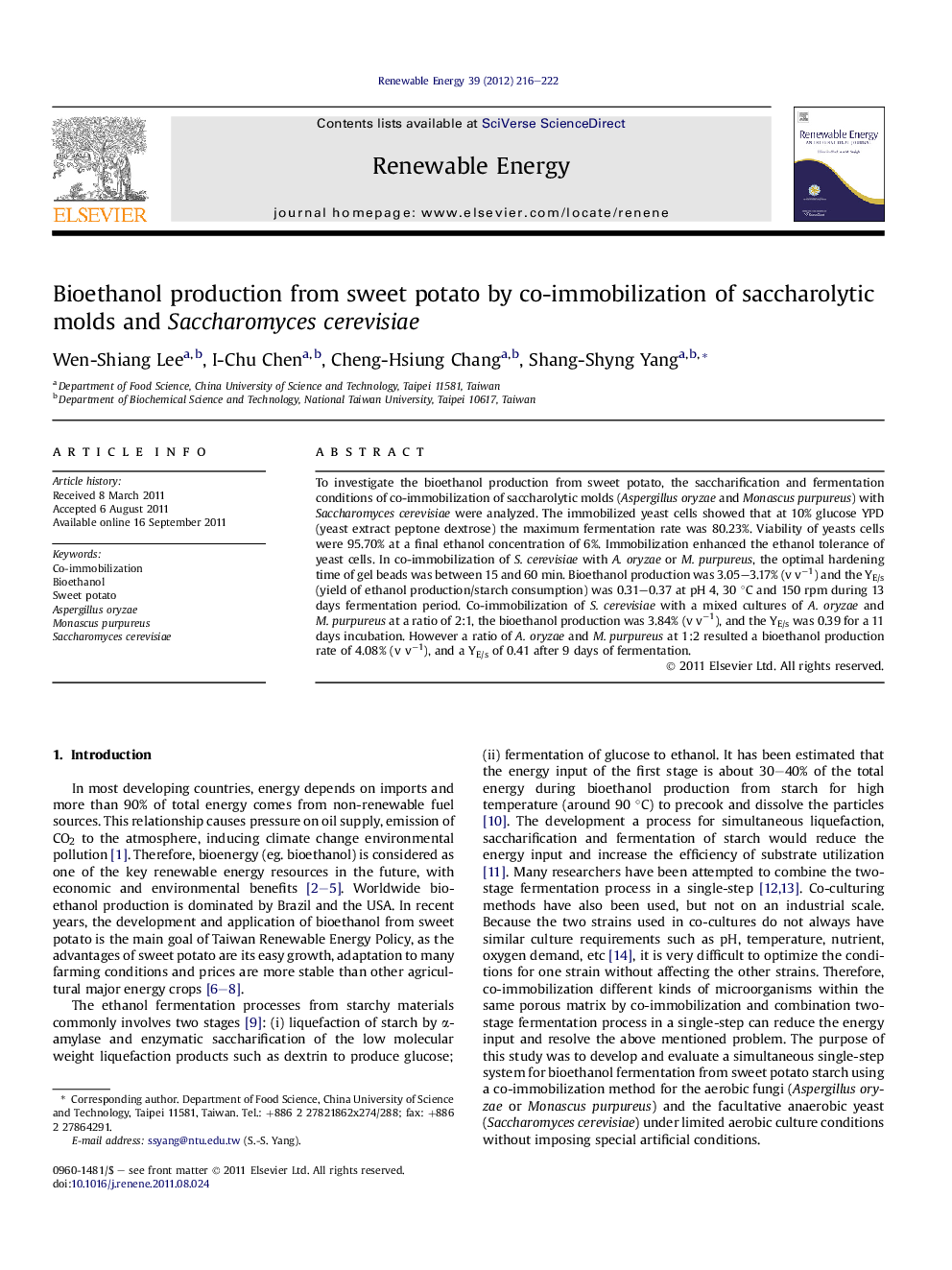| Article ID | Journal | Published Year | Pages | File Type |
|---|---|---|---|---|
| 301240 | Renewable Energy | 2012 | 7 Pages |
To investigate the bioethanol production from sweet potato, the saccharification and fermentation conditions of co-immobilization of saccharolytic molds (Aspergillus oryzae and Monascus purpureus) with Saccharomyces cerevisiae were analyzed. The immobilized yeast cells showed that at 10% glucose YPD (yeast extract peptone dextrose) the maximum fermentation rate was 80.23%. Viability of yeasts cells were 95.70% at a final ethanol concentration of 6%. Immobilization enhanced the ethanol tolerance of yeast cells. In co-immobilization of S. cerevisiae with A. oryzae or M. purpureus, the optimal hardening time of gel beads was between 15 and 60 min. Bioethanol production was 3.05–3.17% (v v−1) and the YE/s (yield of ethanol production/starch consumption) was 0.31–0.37 at pH 4, 30 °C and 150 rpm during 13 days fermentation period. Co-immobilization of S. cerevisiae with a mixed cultures of A. oryzae and M. purpureus at a ratio of 2:1, the bioethanol production was 3.84% (v v−1), and the YE/s was 0.39 for a 11 days incubation. However a ratio of A. oryzae and M. purpureus at 1:2 resulted a bioethanol production rate of 4.08% (v v−1), and a YE/s of 0.41 after 9 days of fermentation.
► We develop and evaluate a single-step system for bioethanol fermentation. ► This system was using a co-immobilization method for the fungi and yeast. ► The mixed blends of molds and S. cerevisiae gave the highest ethanol yields. ► The maximum ethanol production was 4.08% (v v−1) when the Aspergillus:Monascus (A:M) ratio was 1:2.
